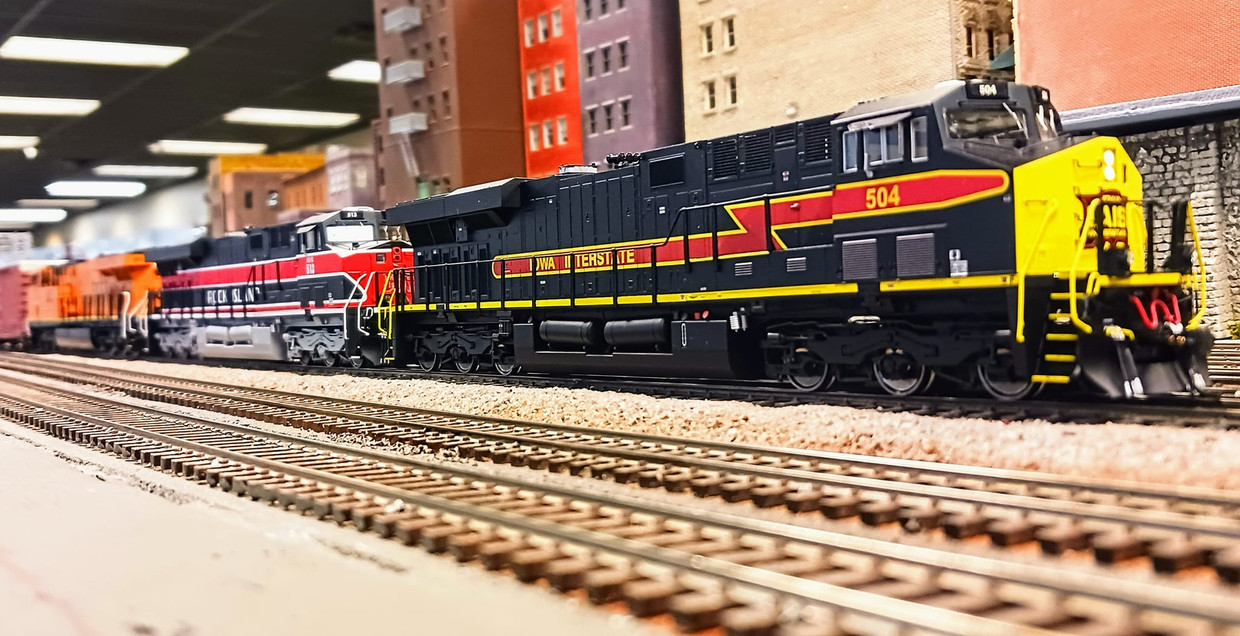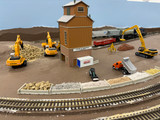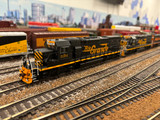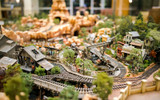Part 4: Converting Model Railroad Locomotives
4.1 Why Convert Locomotives to DCC?
Converting your model railroad locomotives to Digital Command Control (DCC) offers numerous advantages for model railroaders. DCC is a modern and sophisticated method of controlling model trains that replaces the traditional analog control systems. Here's why you should consider converting your locomotives to DCC:
4.1.1 Precise Control
DCC allows for precise control of individual locomotives on your layout. You can control speed, direction, and even lighting effects independently for each locomotive. This level of control is not possible with analog DC systems.
4.1.2 Realistic Operations
DCC enables you to mimic real-world train operations. You can simulate realistic starts, stops, and acceleration, making your layout more engaging and true to life.
4.1.3 Multiple Train Operations
With DCC, you can run multiple locomotives on the same track without the need for complex wiring or blocks. Each locomotive can be controlled separately, enhancing the operational possibilities on your layout.
4.1.4 Digital Sound
DCC allows for the integration of digital sound decoders, creating a more immersive experience. You can hear the authentic sounds of a locomotive, including engine rumble, horn blasts, and even announcements.
4.1.5 Simplified Wiring
DCC reduces the complexity of wiring your layout. You only need two wires to deliver power and control signals to the track, eliminating the need for isolated sections and complex block wiring.
4.2 Identifying Locomotives Suitable for Conversion
4.2.1 Locomotive Type
Certain locomotives, particularly older models, may be challenging to convert due to their design or lack of space for DCC components. Steam locomotives with small tenders or compact switcher locomotives may pose challenges.
4.2.2 Scale and Size
The scale of your locomotives matters. Smaller scales like N and Z may have limited space for DCC components, making installation more complex. Larger scales like HO and O offer more room for conversion.
4.2.3 Accessibility
Consider how easy it is to access the locomotive's interior. Some models have easily removable shells or hoods, while others require more disassembly, which can affect the conversion process's complexity.
4.2.4 Decoder Compatibility
Check if there are compatible DCC decoders available for your locomotive's model and brand. Not all locomotives have readily available DCC solutions, so research this before starting the conversion. Here is one place to check!
4.3 Step-by-Step Guide to Locomotive DCC Conversion
Converting a locomotive to DCC involves several steps. It's essential to follow these steps carefully to ensure a successful conversion:
4.3.1 Gather Necessary Tools and Components
Before you start, make sure you have all the tools and components required for the conversion. This typically includes a DCC decoder, soldering iron, wire, shrink tubing, and any specific parts recommended for your locomotive model.
4.3.2 Disassemble the Locomotive
Carefully disassemble the locomotive to access its interior. Remove the shell or hood and identify the existing motor and wiring.
4.3.3 Remove the Analog Components
Disconnect and remove any existing analog components, such as the DC motor and lighting circuitry. Ensure that you document their connections if you ever want to revert to analog control.
4.3.4 Install the DCC Decoder
Follow the manufacturer's instructions for installing the DCC decoder. This usually involves soldering wires from the decoder to the motor, lighting, and power pickup components.
4.3.5 Program the DCC Decoder
Use a DCC command station or controller to program the decoder. Set the locomotive's address, adjust speed curves, and configure any lighting or sound functions.
4.3.6 Test the Locomotive
Carefully test the locomotive to ensure it responds correctly to DCC commands. Verify that it runs smoothly and that all lighting and sound functions work as intended.
4.3.7 Reassemble the Locomotive
Once you're satisfied with the conversion, reassemble the locomotive, ensuring all parts fit snugly. Pay attention to any wiring and make sure it doesn't interfere with the locomotive's operation.
4.3.8 Fine-Tuning and Maintenance
Regularly maintain and fine-tune your converted locomotives. Keep the wheels and pickups clean, and periodically check for any loose connections or issues that may arise.
By following these steps, you can successfully convert your model railroad locomotives to DCC, enhancing your layout's realism and operational capabilities. Remember to consult your locomotive and DCC decoder manufacturer's instructions for specific details on your particular models. With practice and patience, you'll master the art of DCC locomotive conversion and enjoy the benefits of modern control technology in your model railroad hobby.
Recent Posts
-
All Aboard the Wisdom Express: Life Lessons from Model Railroading
Embarking on the journey of model railroading opens the door to a world where imagination meets prec
-
Capturing History in Miniature: The Art of Prototype Modeling in the Model Railroad World
Prototype modeling in the model railroad world involves creating miniature replicas of real-life tra
-
Unveiling the Imaginative World of Fictional Railroads: Where Creativity Meets the Rails
Model railroading has long been a hobby rooted in historical accuracy and meticulous attention to de




